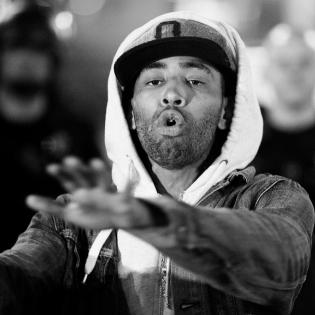Practice Peace
Young people will compare and contrast the philosophies and work of Dr. King and Gandhi. They will determine a service they can provide to promote peace and nonviolence.
The learner will:
- describe nonviolent resistance and its relationship to philanthropy.
- compare the lives and legacies of Dr. Martin Luther King Jr. and Mohandas Gandhi.
- service: to provide a community or organization with something that it needs
- donate: to give or present something, especially to a charitable organization or other good cause
- discrimination: to be treated unfairly by others
- protest: to express strong disapproval of or disagreement with something, or to refuse to obey or accept something, often by making a formal statement or taking action in public
- nonviolent resistance: a type of peaceful protest that is designed to alert others of unfair or unequal acts committed.
Instructions
Anticipatory Set:
Discuss what this quote by Mohandas Gandhi means to the young people: "Happiness is when what you think, what you say, and what you do are in harmony."
The quotation is from Mohandas Gandhi, whose life and teaching were very influential in the development of Dr. King's understanding of service and nonviolence.
Do a little research and reading to answer these questions together:
- How did Gandhi protest the violence that Indians experienced?
- Why do you think Gandhi felt it important to meet violence with peace?
- How does Gandhi’s leadership relate to service?
- How are Dr. King and Gandhi similar with their lives and the legacies that they have left behind?
Nonviolent resistance is a type of peaceful protest that is designed to alert others of unfair or unequal acts committed. One example of nonviolent resistance is sit-ins. Today's nonviolet movements include Black Lives Matter, the women's march, and DACA-related protests. Discuss ways that you could advocate for change or resolve conflicts peacefully.
Philanthropy Framework
-
Strand PHIL.I Definitions of Philanthropy
-
Standard DP 01. Define Philanthropy
-
Benchmark MS.1 Define philanthropy as individuals and organizations providing their time, talent, and/or treasures intended for the common good throughout history and around the world. Give examples.
-
Benchmark MS.4 Give examples of how individuals have helped others.
-
-
-
Strand PHIL.II Philanthropy and Civil Society
-
Standard PCS 01. Self, citizenship, and society
-
Benchmark MS.4 Describe the characteristics of someone who helps others.
-
-
Standard PCS 02. Diverse Cultures
-
Benchmark MS.1 Examine several examples of philanthropic traditions practiced in diverse cultures.
-
Benchmark MS.5 Discuss examples of groups denied their rights in history.
-
-
Standard PCS 04. Philanthropy and Geography
-
Benchmark MS.4 Map the locations of the emerging democracies and identify the relationship of civil society and government.
-
-
-
Strand PHIL.III Philanthropy and the Individual
-
Standard PI 01. Reasons for Individual Philanthropy
-
Benchmark MS.4 Identify and describe the actions of how citizens act for the common good.
-
-
-
Strand PHIL.IV Volunteering and Service
-
Standard VS 01. Needs Assessment
-
Benchmark MS.1 Identify a need in the school, local community, state, nation, or world.
-
-
Standard VS 03. Providing Service
-
Benchmark MS.1 Provide a needed service.
-
-
Standard VS 05. Integrating the Service Experience into Learning
-
Benchmark MS.3 Identify outcomes from the service.
-
-
